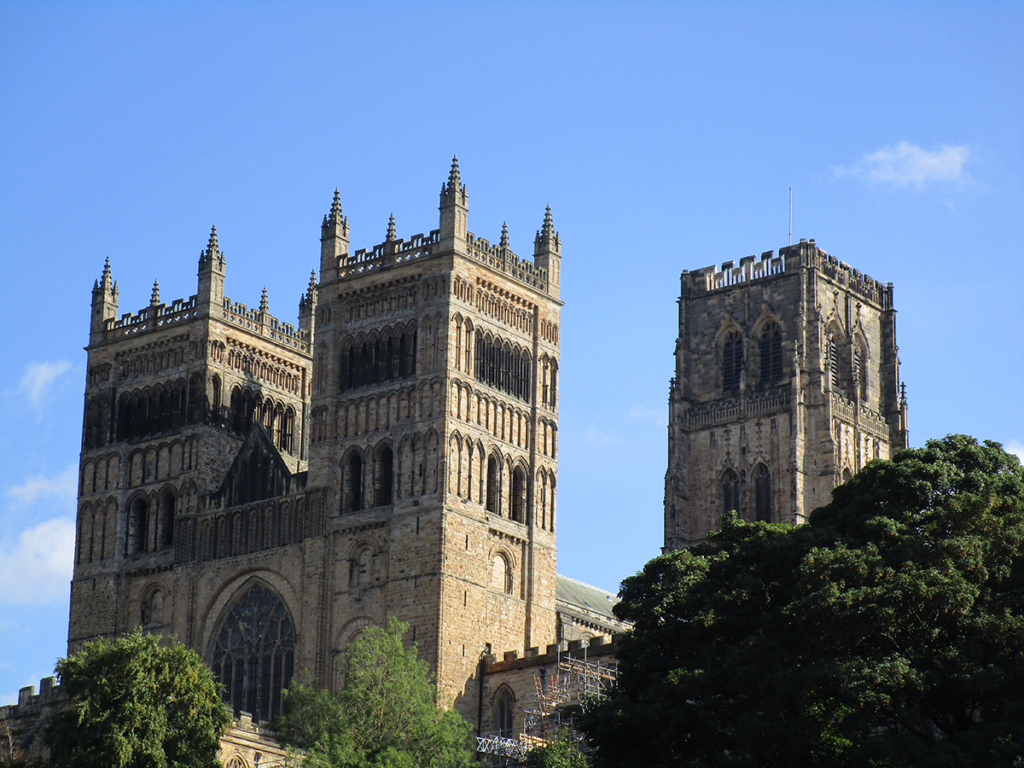
By The Rev’d Preb Julian Ould
Jane and I have just returned from a ten-day holiday. Jane had expressed a wish to visit Durham and the surrounding area. Durham is a long way away and so it seemed sensible to break our journey and we settled on Lincoln for a couple of nights. Having made this decision, then surely we would need to do something similar on the way home and so we booked a night at Lichfield and then Bath, before returning to Exeter.
We duly set about booking accommodation and suddenly realised we had booked a Cathedral crawl, but then why not!
Our first stop, as noted, was Lincoln. Many years ago, forty-five to be exact, I was an assistant manager in a hotel opposite the Cathedral, where we stayed, then called The Eastgate. A lot of water has gone under the bridge since then, and the hotel is now called Lincoln Hotel and very different to how I remember it. The one constant was the Cathedral. Every bit as majestic as I remembered it and it was a joy to not only share their memorial service for the Queen, but also on the Monday morning before setting off for Durham to join a huge crowd, again in the Cathedral to see the Queen’s funeral on large screens. Witnessing this event in this way made it feel more special and we all stood and sang the National Anthem within the service.
Durham beckoned, and so following a hurried lunch we once again hit the road with our sights on the North. Durham is a place I know reasonably well; in that I was ordained in its Cathedral and served my first curacy in the Diocese. However, having said this, so much had changed, but again the one constant was the Cathedral standing in all its grandeur on a hilltop. One of the things that has always struck me about this Cathedral is the girth of its pillars, which in turn gives a sense of awe and wonder when standing in the nave.
Whilst we were based in Durham, we ventured yet further North, to Newcastle (another Cathedral) and then up as far as Lindisfarne or Holy Island. Lindisfarne is famous primarily for two remarkable saints, Aidan who founded a Monastery there and Cuthbert who was not only a monk, but also a bishop and his tomb is housed in Durham Cathedral. Lindisfarne is also famous for the Lindisfarne Gospels, an illuminated manuscript created around 700 AD. The Lindisfarne Gospels is a historical marvel which demonstrates Anglo-Saxon art, culture and religious expression and is still beautifully preserved to this day. We were lucky to see them, not at Lindisfarne, but a special exhibition in one of the Galleries in Newcastle.
We did a lot of sight seeing in places like the Corbridge Roman town, a site excavated that reveals something of the wonder of Roman Brittian.
One final Cathedral was Lichfield. I had never seen this before, but again it had splendour and majesty and was a place of peace and wonder.
So why am telling you all this for a Holy Thought? Well, firstly, I mentioned a lot about the Cathedrals I knew remaining constant whilst everything around them seemed to change. There is a wonderful modern hanging rood in Peterborough Cathedral, another treasure I have had the privilege of sharing, with a globe at the foot of the cross, with the inscription, ‘the cross remains firm whilst the world revolves or goes on’. Our cathedrals stand at the heart of our cities as a constant reminder of the presence of Christ. But it is more than this and goes beyond our Cathedral to our churches and all holy places. Lindisfarne is a tiny remote island, but it has a sense of peace and tranquillity about it and really is a Holy Island. I am a great believer that places can become steeped in prayer, which is what makes our cathedral and churches special places to be. Our own Cathedral has experienced centuries of prayer, which makes a place people naturally come to if they want to be still.
Our cathedrals principally, because of the dominant positions they stand in, but indeed all churches and holy places are power houses of prayer and whilst the world goes on, they remain firm in the way of Christ.